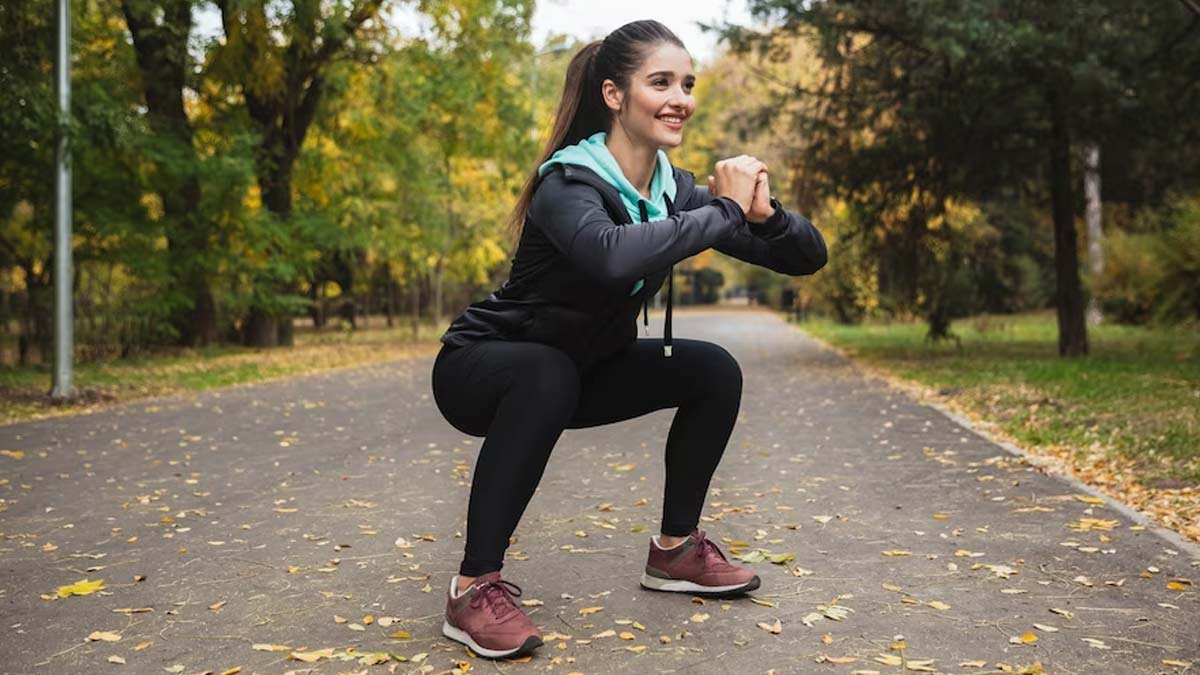
Pregnancy can be an arduous journey for most first-time mothers. Growing a child inside your womb takes a heavy toll on the mother’s physical and mental health. As carrying a baby puts pressure on the entire body, it can cause back and joint pain and sore muscles, adding extra burden to an already challenging situation.
Table of Content:-
The American College of Obstetricians and Gynaecologists (ACOG) suggests that regular exercise during pregnancy can help you seek relief from back and joint pain, sore muscles, and risk of gestational diabetes, and help you lose the baby weight after your baby is born. One such exercise that works wonders for pregnant women is the duck walk.
Also Read: Working Out During Pregnancy: Is It Safe?
Benefits of Duck Walking

During pregnancy, staying active and engaging in appropriate exercises can offer several benefits, and duck walking is no exception. Duck walking, also known as sumo squat or plie squat, involves squatting while keeping the feet turned outward at an angle. Some of the benefits of including duck walk in your fitness regime are:
- Strengthened Leg Muscles: Duck walking primarily targets the quadriceps, hamstrings, and inner thigh muscles. Strengthening these muscles can provide support to the joints, help maintain proper posture, and reduce discomfort associated with carrying extra pregnancy weight.
- Hip and Pelvic Floor Strengthening: Duck walking engages the hip muscles and activates the pelvic floor muscles. Strengthening the pelvic floor is particularly beneficial during pregnancy and postpartum, as it supports bladder control and helps prevent issues like urinary incontinence.
- Improved Flexibility: The wide stance and squatting motion in duck walking promote flexibility in the hips, groin, and lower back. This increased flexibility can help ease discomfort as the body adjusts to the changes brought about by pregnancy.
- Encourages Optimal Fetal Positioning: Duck walking could also help the baby to settle into an optimal position for birth. This position is typically head-down and anterior, which is favourable for a smoother delivery.
- Enhanced Circulation: Duck walking can stimulate blood flow and circulation, reducing the risk of swelling and varicose veins during pregnancy.
Also Read: How Exercising In The Early Pregnancy Reduces The Risk Of Gestational Diabetes
How to Duck walk

Duck walking, when performed with care and under the guidance of a healthcare professional, can be a part of a well-rounded prenatal fitness routine. Follow these steps to practice duck walking in the correct way:
- Start with a squat by aligning your centre of gravity over your heels. Get as deep as you comfortably can. Rest the weight on your heels.
- Keep your feet stuck to the ground to keep your weight evenly distributed. Engage your core by squeezing your abdomen. Don’t allow your torso to lean or turn as you start the walking motion.
- Now, lift one foot off the ground slowly, and place it further than your other foot. Repeat the same step with the other foot.
- When you get used to the stance of duck walking, alternate between each foot and move forward.
- Try to cover 10-12 feet at a time by duck walking. Increase your steps or distance over time as you get better. After every few steps, stand up and give your leg muscles a chance to recover.
While duck walking can offer potential health benefits, each pregnancy is unique. Pregnant individuals should exercise caution when considering duck walking or any other form of exercise during pregnancy. Regular exercise can help pregnant women stay fit, improve stamina, and promote a healthier emotional state. However, the safety and well-being of both the pregnant person and the baby should always be the top priority. Remember to always begin your workout sessions with a light warm and stretching of your hips, knees and ankles.
Also watch this video
How we keep this article up to date:
We work with experts and keep a close eye on the latest in health and wellness. Whenever there is a new research or helpful information, we update our articles with accurate and useful advice.
Current Version